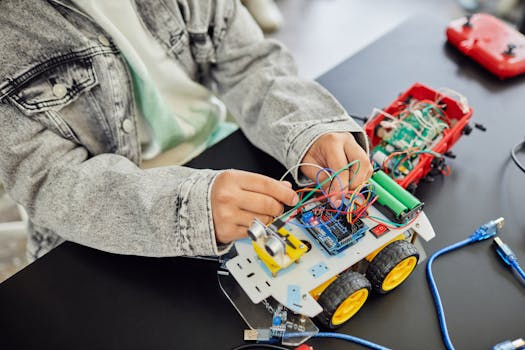Robotics in Elementary: Hands-on STEM Learning
Robotics has been gaining popularity in recent years as a hands-on approach to teaching science, technology, engineering, and math (STEM) concepts to students. While this field may seem more suited to older students, elementary students are benefiting greatly from incorporating robotics into their curriculum. By providing hands-on experiences with robotics, elementary students are not only learning key STEM skills, but also developing important critical thinking, problem-solving, and teamwork skills. In this article, we will explore the benefits of robotics in elementary schools and how it is shaping the future of STEM education.
The Importance of STEM Education in Elementary Schools
Before delving into the specific benefits of robotics in elementary education, it is important to understand the importance of STEM education in elementary schools. In today’s technological world, it is essential for students to have a strong foundation in STEM subjects. These skills are not only necessary for future careers, but also for everyday life. By introducing STEM concepts at an early age, elementary students are able to build a solid foundation for their future academic and career paths.
What is Robotics?
Robotics is the branch of technology that deals with the design, construction, operation, and application of robots. Through robotics, students learn about science, technology, engineering, and math through hands-on experiences. They are able to build, program, and control robots, helping them to understand how these complex machines work and how they can be used to solve real-world problems.
The Benefits of Robotics in Elementary Education
1. Encourages Creativity and Innovation
One of the key benefits of robotics in elementary education is that it encourages creativity and innovation. By allowing students to design, build, and program their own robots, they are given the freedom to think outside the box and come up with unique solutions. This not only helps to foster a love for learning, but also encourages students to think critically and creatively.
2. Develops Problem-Solving Skills
Robotics also helps to develop problem-solving skills in elementary students. As they work on building and programming their robots, they are faced with various challenges and obstacles. These problems require students to think critically and come up with solutions in order to make their robots function successfully. By regularly engaging in this type of problem-solving, students are able to develop important skills that can be applied in other areas of their lives.
3. Enhances Teamwork and Collaboration
In the field of robotics, teamwork and collaboration are crucial for success. In order to build and program a robot, students must work together, sharing ideas and skills. This helps to develop social and emotional skills such as communication, cooperation, and compromise. It also prepares students to work effectively in group settings, an important skill that will benefit them in their future academic and career paths.
4. Makes STEM Learning Fun and Engaging
With the use of robots, STEM learning becomes fun and engaging for elementary students. Many students struggle with traditional teaching methods and find it difficult to grasp abstract concepts. However, with robotics, students are able to see the direct application of STEM concepts in action. This hands-on approach makes learning more enjoyable and helps to create a positive attitude towards these subjects.
Incorporating Robotics in Elementary Education
Incorporating robotics into elementary education does not have to be a daunting task. Many schools are already implementing robotics into their curriculum and seeing positive results. There are various kits and resources available for educators to easily introduce robotics into their classroom. Additionally, there are also coding and programming tools specifically designed for young learners, making it easy for elementary students to get started with robotics.
Furthermore, it is important for schools to offer extracurricular programs and clubs that focus on robotics. This allows students who may not have the opportunity to learn about robotics in their classroom to still have access to this valuable learning experience.
In Conclusion
In today’s rapidly evolving world, it is essential for students to have a strong foundation in STEM subjects. By incorporating robotics into elementary education, students are able to develop important skills such as critical thinking, problem-solving, and teamwork, while also cultivating a love for STEM subjects. Robotics not only benefits students in their academic journey, but also prepares them for their future roles as innovators and leaders in the field of technology.










